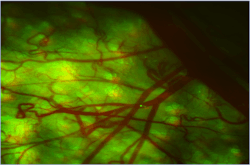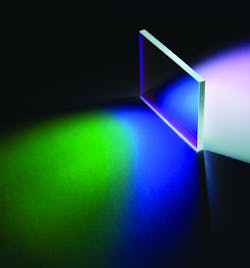Some optics manufacturers cite the life sciences market as being a significant driver of their business. Optical filters maker Semrock (Rochester, NY) states that life sciences is the company’s most important market today. Edmund Optics (EO; Barrington, NJ), which produces optical components and coatings, says that the life sciences market makes up about 20% of its revenue right now, with plans to expand even further. And optical components and thin-film coatings manufacturer OptoSigma (Santa Ana, CA) comments that the importance of the life sciences industry is evidenced by the fact that its top 20 customers are biomedical-related.
Other optics manufacturers are beginning to delve into the life sciences market, including Precision Glass & Optics (PG&O; also in Santa Ana, CA), which is beginning to see a steady increase in customers that are in the life sciences industry.
Key customers
Original equipment manufacturers (OEMs) and researchers top the list as the largest customers for the optics manufacturers I interviewed—most of which work with customers to develop optical components and systems that are tailored to their specifications, with the goal of solutions to help customers yield proof-of-concept. To help researchers lower the cost of building imaging instrumentation capable of large magnification ranges, EO has been able to use an assortment of standard achromatic lenses, singlets, and off-the-shelf (OTS) filters to create low-cost, high-performance multi-element objectives and tube lenses able to compete with high-priced objectives from microscopy companies (see Fig. 1), as well as save customers substantial money, says Petra Lepke, EO optical market development manager.
Meeting the challenges
Application of photonics technologies in ophthalmology continues to expand, says Lepke, and optics are key for focusing light into the eyes to achieve different levels of penetration for applications such as laser-assisted cataract surgery, which cuts with a laser to get the cloudy eye lens out; topography-guided LASIK, which uses ultraviolet (UV) excimer radiation to ablate the front surface of the eye lens after the outer eye layer is first partially cut and peeled out of the way; and optical coherence tomography (OCT), which penetrates into the retina. Wavelengths ranging from 800–900 nm and those around the 1310 nm band are used heavily in OCT, according to Stephan Briggs, product line engineer at EO. Various near-infrared (NIR) wavelengths penetrate the eye differently and allow imaging of the retinal or corneal region.
Strong filters with narrow or broad bandwidth, such as dichroic filters, enable detection of weak fluorescence signals without oversaturation, which is important for flow cytometry, for instance, says Briggs. Bandpass filters that pass only a narrow band of light are often used; sometimes, longpass or shortpass filters are used to block out the excitation wavelength while passing the fluorescence wavelength. Manufacturing improvements have enabled the production of advanced hard-coated filters with optical density greater than 6.0, says Briggs, helping to avoid damaging delicate biological samples, and removing unwanted light from the system.
Dan Bukaty, president at PG&O, notes that as scientists are discovering more and more on the nanoscale, optics become even more and more important. So, the ability to look at these things with different wavelengths of light provides greater opportunities for optics and optical coatings. “Due to the specificity and quantifiable nature of fluorescence imaging, optical filters and mirrors have risen in performance to meet the market need for optics that provide high performance and spectral complexity over an ever increasing fluorescent probe range,” says Nick George, director of product marketing at Semrock. George notes that the latest optical filters have improved the sensitivity, resolution, and speed of fluorescence instruments. Also, optical filters and filter sets that offer tunable angles enable spectral adjustment without polarized light separation—a limitation common in trending microscopy applications (see Fig. 2).Biomedical trends
Trends in infrared (IR) and laser optics on substrates such as calcium fluoride (CaF2), barium fluoride (BaF2), magnesium fluoride (MgF2), zinc selenide (ZnSe), silicon (Si), and germanium (Ge) include innovations in coatings and accommodation of narrower bandwidths to facilitate noninvasive imaging, according to Lepke. Using these types of optics in noninvasive imaging helps to diagnose liver disease, read blood glucose levels, and monitor oxygen in older patients, says Michael Gauvin, VP of sales and marketing at optical design firm Lambda Research Corporation (Littleton, MA). Gauvin adds that they also aid flow cytometry and cell imaging, which investigate cell counts to find diseases, while Michelle Young, regional sales manager at OptoSigma, says that they aid in targeted drug delivery and stem cell research. Finally, laser and light-emitting diode (LED) biomedical devices to eradicate skin cancer and light therapy throughout the body and DNA sequencing benefit from inclusion of these types of optics, says Young. This trend should increase as the demand for cures and improved treatment options also increases, says George.
About the Author
Lee Dubay
Managing Editor
Lee Dubay is managing editor for Laser Focus World. She is a seasoned editor and content manager with 20 years of experience in B2B media. She specializes in digital/print content management, as well as website analytics, SEO, and social media engagement best practices.


